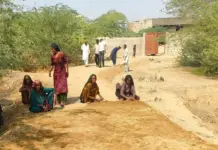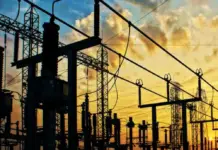What I miss in London the most is ‘tandoor ke roti’. This is not that the roti is not available here, but it lacks the aroma and crisp which we usually have in Lahore.
My friends in south Punjab who are wheat farmers say that behind the fluffy loaf of rotis lies a story often untold – the story of wheat farmers.
For many, wheat roti is a staple, a comfort, a symbol of sustenance.
Chief Minister Maryam Nawaz announced slashing roti and naan prices. The media welcomed the news without realizing that the flour crises looms large, a crisis that disrupts homes and markets. We, the consumers, panic when prices rise and stocks dwindle. But have we stopped to consider the root cause?
This year, there is a bumper crop of wheat in the country. This is good news for the government but bad development for farmers. It crashes market and farmers are being forced to sell wheat at Rs3,000, which is Rs1,000 less than the official rates.
Pakistan rejoices in a bountiful wheat harvest – a “bumper crop” as they call it. Yet, a shadow hangs over this celebration. Despite a surplus, the future of wheat security remains uncertain, and the reason lies in the broken promises made to the farmers who nourish this nation.
Logic dictates that a brimming harvest should bring down market prices. However, this is where the harsh reality bites. The cost of production for a single maund (approximately 40 kgs) of wheat touches Rs4,000. The cost includes seeds, fertilizers, irrigation, and harvesting.
This is where the government’s role becomes critical. To incentivize farmers, a “support price” is established. The Punjab government, for instance, set this price at Rs3,900, offering a glimmer of hope. However, alongside comes another blow – a drastically reduced procurement target compared to previous years.
I would urge my media friends to visit wheat farms and speak to farmers. Farmers are the true experts on the ground, which tell the real story. These anxieties stem from a fundamental issue: the disconnect between agricultural policies and the realities faced by farmers.
Here’s where we need to listen to the farmers themselves. Many feel the support price isn’t high enough to cover their rising costs. The procurement process itself can be riddled with inefficiencies. Streamlining procurement, minimizing bureaucratic hurdles, and ensuring timely payments are crucial steps.
Furthermore, neglecting agricultural development is a recipe for disaster. We need to invest in research and extension services, ensuring farmers have access to high-yielding, disease-resistant seeds and the knowledge to use them effectively. Modernization through mechanization and irrigation improvements will also play a vital role in boosting productivity and reducing reliance on unpredictable rainfall.
Protecting our wheat farmers isn’t just about ensuring a steady supply of flour. It’s about safeguarding the livelihoods of millions, fostering rural development, and strengthening our national food security. Let’s not forget the silent backbone that nourishes our nation. Let’s empower them, invest in them, and ensure they can continue providing the staff of life – bread – for generations to come.
Imagine a farmer with six acres of land, receiving a mere six sacks from the government for procurement. This leaves them with a surplus they’re forced to sell to the very same Aadhartis who offer a measly Rs3,000, nowhere near the cost of production. This frustration discourages farmers from producing beyond their immediate needs, ultimately leading to a self-inflicted shortage in the coming months.
We celebrate a surplus while staring down the barrel of a potential crisis. How can we resolve the crisis? First, the government should buy wheat from farmers. It should raise the procurement target, ensuring a larger share of the harvest is bought at the support price. It should also reduce bureaucratic hurdles and expedite payments to farmers, eliminating delays and frustrations. Moreover, we all need to encourage competition amongst buyers so market prices rise closer to the support price, giving farmers a fair return.
Investing in our farmers is paramount. They are the backbone of food security, and their wellbeing directly impacts the nation’s well-being. Let’s bridge the gap between promises and action, ensuring a sustainable future for our wheat farmers and a stable supply of bread for our tables.







